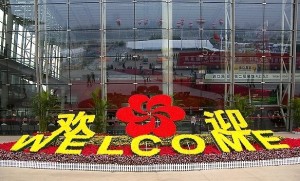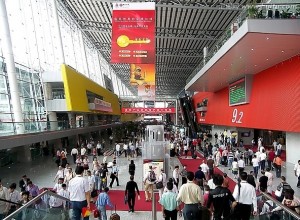Chinese Export Commodities Fair also known as Canton Fair is held twice a year in Guangzhou during spring and autumn, with a history of 55 years since 1957 and co-organized by the China Foreign Trade Centre and the Foreign Affairs Office of Guangdong Province. Canton Fair is the biggest fair in China and now in the world with the assortment of products, number of attendance and the number of deals made. Canton Fair has become a microcosm of China’s growth in international trade. Because of its long history, the fair is becoming increasingly sophisticated in its execution and comprehensive in its scope as the government-sponsored organization is committed to continuously adapting its functions to take advantage of the status of China in international trade as well as to promote and further its development.
 The Canton Fair is a biannual event, held in April and October every year.
The Canton Fair is a biannual event, held in April and October every year.
The Canton Fair is divided into three phases, each lasting for five days. Each phase has two sessions, one in April or May and the second in October or November. More than sixteen broad product categories are on exhibit, and the Fair is held in three Phases, covering industrial and consumer products.Different products are showcased in different phases. Commodities include consumer as well as industry related products including electronics, household electrical appliances, chemical products, lighting, vehicles, spare parts, home decor, medicine and medicinal products, food and native produce, office supply, clothing, gifts and miscellaneous consumer goods, to name a few.

With a history of 56 years since the spring of 1957, China Import and Export Fair is now the largest trade faire in china with the assortment of products, the attendance, number of business deals that other trade fairs cannot compare with. It is held biannually in Guangzhou every spring and fall. Business people from all over the world are gathering in Guangzhou, exchanging business information and developing friendship.
Global buyers in Canton Fair can find the best quality samples ever, but that doesn’t always guarantee the same high quality in the mass production. Regularly there are stories of bad quality products reaching their destination with little resemblance to the approved samples, or the first shipment arriving close to the original samples followed by the next two boxes of junk. Nowadays many experienced global buyers would rather pay a site trip to the local Chinese factories for a closer look at the in-house production lines and quality control systems.